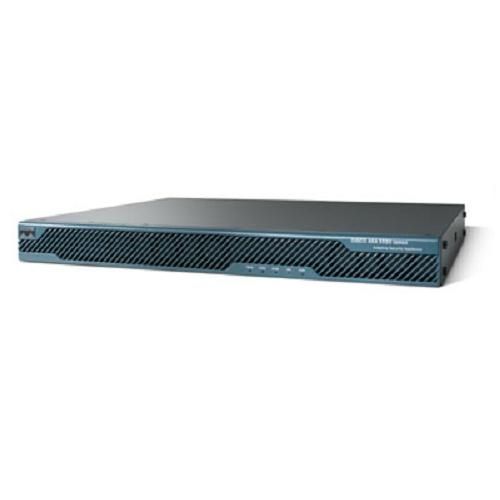AIR-AP1852I-T-K9 Overview
Cisco Aironet 1850. Maximum data transfer rate: 2000 Mbit/s, Ethernet LAN data rates: 10,100,1000 Mbit/s, Networking standards: IEEE 802.11a, IEEE 802.11ac, IEEE 802.11b, IEEE 802.11d, IEEE 802.11g, IEEE 802.11h, IEEE 802.11i,.... Security algorithms: WPA, WPA2. WAN connection: Ethernet (RJ-45). AC input voltage: 100 - 240 V, AC input frequency: 50 - 60 Hz, Output voltage: 57 V. Placement: Ceiling, Table, Wall, Product colour: White, Certification: UL 60950-1, CAN/CSA-C22.2 No. 60950-1, UL 2043, IEC 60950-1, EN 60950-1, EN 50155 , FCC Part...
AIR-AP1852I-T-K9 is one of the Cisco Aironet 1850 Series Access Points. Cisco 1850 AP series is ideal for small and medium-sized networks. This series supports enterprise-class 4x4 MIMO, four-spatial-stream access points that support the IEEE’s new 802.11ac Wave 2 specification. The 1850 Series extends support to a new generation of Wi-Fi clients, such as smartphones, tablets, and high-performance laptops that have integrated 802.11ac Wave 2 support. The model AIR-AP1852I-T-K9 provides T Regulatory Domain and internal antennas.
Quick Specs
Table 1 shows the quick specs of AIR-AP1852I-T-K9.
Part Number | AIR-AP1852I-T-K9 |
Description | 802.11ac Wave 2 Access Point, 4x4:4, Internal-Ant, T Regulatory Domain |
Features | - 4x4 MIMO with four spatial streams, single-user MIMO - 4x4 MIMO with three spatial streams, multiuser MIMO - MRC - 802.11ac beamforming (transmit beamforming) - 20-, 40-, and 80-MHz channels - PHY data rates up to 1.7 Gbps (80 MHz in 5 GHz) - Packet aggregation: A-MPDU (Tx/Rx), A-MSDU (Tx/Rx) - 802.11 DFS - CSD support |
Regulatory Domain | T (T regulatory domain): - 2.412 to 2.462 GHz; 3 channels - 5.280 to 5.320 GHz; 3 channels - 5.500 to 5.700 GHz; 8 channels (excludes 5.600 to 5.640 GHz) |
Antenna | Internal Antenna |
Interfaces | - 1 x 10/100/1000BASE-T autosensing (RJ-45), Power over Ethernet (PoE) - 1 x 10/100/1000BASE-T autosensing (RJ-45), AUX (used for Link Aggregation) - Management console port (RJ-45) - USB 2.0 (enabled via future software) |
Dimensions (W x L x H) | 8.3 x 8.3 x 2 in. (210.8 x 210.8 x 50.8 mm) |
Weight | 3.12 lb (1.41 kg) |
Product Details
Figure 1 shows the AIR-AP1852I LED Indicator Position.

Note: ① LED indicator position
Table 2 shows the AP LED indicators’ descriptions.
Message Type | LED State | Message Meaning |
Association status | Chirping Green | Normal operating condition, but no wireless client associated |
Green | Normal operating condition, at least one wireless client association | |
Boot loader status | Green | Executing boot loader |
Boot loader error | Red | Boot loader signing verification failure |
Access point regulatory domain priming status | Blinking Amber | AP priming to a new regulatory domain by Neighbor Discovery Protocol (NDP), in progress |
Cycling Red, Green and off | AP waiting to be primed | |
Chirping Red | AP primed to a wrong regulatory domain | |
Operating status | Blinking amber | Software upgrade in progress |
Cycling through green, red, and amber | Discovery/join process in progress | |
Rapidly cycling through red, green, amber, and off. | Access point location command invoked from controller web interface. | |
Access point operating system errors | Cycling through red, green, amber, and off | General warning; insufficient inline power |
Figure 2 shows AIR-AP1852I Ports and Connections.

Note:
① | Mode button | ④ | AUX (Auxiliary) port. |
② | RJ-45 console port | ⑤ | PoE-In port (Ethernet Uplink port) |
③ | USB 2.0 port | ⑥ | 48 V DC input power port |
AUX (Auxiliary) port appears in the wireless controller user interface as GigabitEthernet1. This port, along with the PoE-In port, is used for Link Aggregation. This port is disabled when using 802.3af (15.4W) power.
Compare to Similar Items
Table 3 shows the comparison between two AP.
Support & Resources
Get more information
Do you have any question about the AIR-AP1852I-S-K9C?
Contact us now via Live Chat or [email protected].
AIR-AP1852I-T-K9 Specification
AIR-AP1852I-T-K9 Specification |
|
|
Description |
802.11ac Wave 2 Access Point, 4x4:4, Internal-Ant, T Regulatory Domain |
|
Software |
Cisco Unified Wireless Network Software Release with AireOS wireless controllers: 8.1 MR1 or later for the Cisco Aironet 1850 Series Access Points |
|
Regulatory Domain |
T (T regulatory domain): - 2.412 to 2.462 GHz; 3 channels - 5.280 to 5.320 GHz; 3 channels - 5.500 to 5.700 GHz; 8 channels (excludes 5.600 to 5.640 GHz) |
|
Deployment modes |
Centralized local, Standalone, Sniffer, Cisco FlexConnect, Monitor, OfficeExtend, Mesh |
|
Supported wireless LAN controllers |
Cisco 2500 Series Wireless Controllers, Cisco Wireless Controller Module for ISR G2, Cisco Wireless Services Module 2 (WiSM2) for Catalyst 6500 Series Switches, Cisco 5500 Series Wireless Controllers, Cisco Flex 7500 Series Wireless Controllers, Cisco 8500 Series Wireless Controllers, Cisco 5760 Series Wireless Controllers, Cisco Catalyst 3650/3850 Series switch with integrated controller Cisco Mobility Express |
|
802.11n version 2.0 (and related) capabilities |
4x4 MIMO with four spatial streams Maximal ratio combining (MRC) 20- and 40-MHz channels PHY data rates up to 600 Mbps (40 MHz with 5 GHz) Packet aggregation: A-MPDU (Tx/Rx), A-MSDU (Tx/Rx) 802.11 dynamic frequency selection (DFS) Cyclic shift diversity (CSD) support |
|
802.11ac Wave 1 and 2 capabilities |
4x4 MIMO with four spatial streams, single-user MIMO 4x4 MIMO with three spatial streams, multiuser MIMO MRC 802.11ac beamforming (transmit beamforming) 20-, 40-, and 80-MHz channels PHY data rates up to 1.7 Gbps (80 MHz in 5 GHz) Packet aggregation: A-MPDU (Tx/Rx), A-MSDU (Tx/Rx) 802.11 DFS CSD support Rogue device detection |
|
Integrated antenna |
2.4 GHz, gain 3 dBi, internal omni, horizontal beamwidth 360° 5 GHz, gain 5 dBi, internal omni, horizontal beamwidth 360° |
|
Interfaces |
1 x 10/100/1000BASE-T autosensing (RJ-45), Power over Ethernet (PoE) 1 x 10/100/1000BASE-T autosensing (RJ-45), AUX (used for Link Aggregation) Management console port (RJ-45) USB 2.0 (enabled via future software) |
|
Indicators |
Status LED indicates boot loader status, association status, operating status, boot loader warnings, boot loader errors |
|
Dimensions (W x L x H) |
Access point (without mounting bracket): 8.3 x 8.3 x 2 in. (210.8 x 210.8 x 50.8 mm) |
|
Weight |
3.12 lb (1.41 kg) |
|
Environmental |
Cisco Aironet 1850i Nonoperating (storage) temperature: -22° to 158°F (-30° to 70°C) Nonoperating (storage) altitude test: 25˚C, 15,000 ft. Operating temperature: 32° to 104°F (0° to 40°C) Operating humidity: 10% to 90% (noncondensing) Operating altitude test: 40˚C, 9843 ft. |
|
System memory |
1 GB DRAM 256 MB flash |
|
Input power requirements |
AP1850: 44 to 57 VDC Power supply and power injector: 100 to 240 VAC; 50 to 60 Hz |
|
Power draw |
20.9W Note: When deployed using a Power over Ethernet (PoE) specification, the power drawn from the power sourcing equipment will be higher by some amount, depending on the length of the interconnecting cable. |
|
Powering options |
802.3at Enhanced PoE Cisco power injector, AIR-PWRINJ4= Cisco local power supply, AIR-PWR-C= Cisco power injector, AIR-PWRINJ5= (Note:this injector supports 802.3af only) 802.3af Note: If 802.3af PoE is the source of power, (1) the 1852e 2.4-GHz radio will shift to 2x3 from 3x4, (2) The USB port and AUX Ethernet port are disabled on both the 1852i and 1852e. |
|
Warranty |
Limited lifetime hardware warranty |







Customer questions & answers
Customer reviews
0 out of 5
No reviews yet